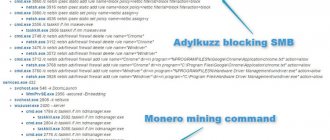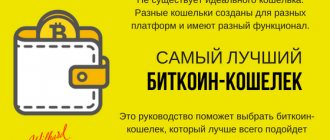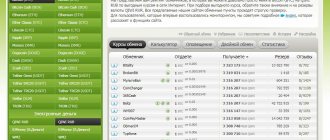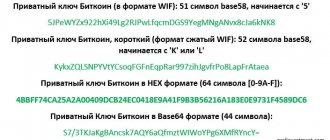Blockchain is more than an interesting object for in-depth data analysis. Every transaction ever made since the creation of the blockchain on January 3, 2009 is publicly available. A copy of it can be downloaded to your computer, which will require about 20 GB of free space. In addition, there are several options for viewing the blockchain on the Internet using sites such as BlockChain.info and Block Explorer.
However, in addition to its attractiveness, this database is also somewhat deceptive. Although we have access to every individual transaction, the information that can be obtained is far from comprehensive. With access to the blockchain, many users make erroneous conclusions about what is actually behind the data.
Public keys and people
There have been several articles about income inequality and address distributions which, frankly, are mostly hot air. There is no way to associate Bitcoin public keys with specific people (unlike those generated automatically for intermediate transactions, gaming sites). There are millions of Bitcoin addresses that contain "dust" - the so-called spam of the early history of the blockchain, when you could make a transaction without a fee.
At the time, there was no fee, so attackers sent out millions of bogus requests in an attempt to destroy the Bitcoin network, trying to flood it with junk transactions worth one billionth of a penalty. Every one of those millions of transactions is still locked into the blockchain, as it stores every transaction in history since its creation. After changes were made to the protocol, the Bitcoin network began to cope better with DDoS attacks, and the distribution of addresses became somewhat more rational.
However, it is still possible to observe the so-called. “spam” generation of Bitcoin addresses. This scheme is found on the well-known gaming site SatoshiDice, on various exchanges, in automated trading systems, as well as in other services that do not follow the “one address = one person” rule.
Here is a link to a graph that shows the change in the number of unique Bitcoin addresses over time. As you can see, after January 2011 (2 years from the beginning of the Bitcoin era) there was almost no activity. However, starting in June 2011, “attacks” on the network began. In addition to this, there was the development of gambling sites, exchanges, bots and other services, which led to an exponential increase in the number of Bitcoin addresses. Obviously, the number of addresses does not correlate with the number of actual users of Bitcoin wallets. Similarly, in this graph you can see an increase in the number of Bitcoin transactions, which also resembles a deliberate attempt by attackers to bring down the network.
Number of unique Bitcoin addresses, including addresses with zero balance. Excel file with data
The same data, but without addresses with a zero balance. You can see that part of the blockchain that is “littered” with “non-working” addresses
This image shows the number of unique addresses that have existed on the blockchain over time. Their total number is about 36 million. The vast majority (highlighted in green) have a zero balance; they were used as intermediate addresses for transferring coins from one address to another and are now not used in any way. The red area indicates the number of addresses with a non-zero balance, which, however, is so tiny that it can be neglected.
Many of those who analyze the distribution of Bitcoin by address include such addresses with minuscule balances in their analyzes as if they represent individual Bitcoin investors, which is not true. The area marked in blue represents the number of Bitcoin addresses with a non-zero balance, which is only slightly larger than the balance of addresses in the red zone. Thus, they are also unlikely to be classified as wallets of specific users or investors. Many of these addresses are primarily used as mobile wallets, intermediate addresses, or for tipping, etc.
The blockchain records all transactions from day one. Analyzing these operations, some things can be said with certainty. For example, which Bitcoin addresses with public keys have been used at least once. You can also find out how many total transactions there were to transfer and receive bitcoins for each address. However, of particular interest is that we can find out when someone made the last transaction from their address. Moreover, only a transaction of sending bitcoins can definitely indicate that someone owns and controls this address, because To perform such an operation, a private key is required. You do not need a private key to receive bitcoins.
Rating of the TOP 5 best Bitcoin wallets in Russian
If it is important for you that your Bitcoin wallet works in Russian, then pay attention to the following services. The website and/or mobile application of these services operate in Russian.
| Name | Address | Wallet type | Cryptocurrencies | |
| #1 | Bitcoin Core | https://bitcoincore.org/ | Cold, Desktop | BTC |
| #2 | Blockchain.com | https://www.blockchain.com/ | Hot, Browser, Mobile | BTC, BCH, ETH, ETC, LTC and other ERC-20 tokens |
| #3 | Payeer.com | https://payeer.com/ | Hot, Online, Mobile | BTC, ETH, LTC, DASH |
| #4 | coinomi.com | https://www.coinomi.com/ | Cold | Multi |
| #5 | Kryptonator | https://rf.cryptonator.com/ | Hot, Online, Mobile | BTC, LTC, DOGE, DASH, XMR, XRP, ZEC |
The beginning of the blockchain
Let's take, as an example, the very first Bitcoin transaction ever conducted in history, which corresponds to the first ever mined Bitcoin block of the notorious Satoshi Nakamoto. Here is a link to this transaction. This very first transaction, which was the result of a newly mined Bitcoin block (known as “coinbase”), took place at the address with the following public key: 1A1zP1eP5QGefi2DMPTfTL5SLmv7DivfNa.
If you follow this link, you will see that there are 908 Bitcoin transactions associated with this address! However, they are all the result of donations from random people on the Internet. However, there was not a single “spending” transaction from this address.
Now let's look at the second transaction in Bitcoin history. Six days later, Satoshi mined another Bitcoin block and received another reward of 50 Bitcoins. By the way, at that time they did not cost anything, but today it is about $30,000. Here is the link. These 50 bitcoins have already been sent to another public key address: 12c6DSiU4Rq3P4ZxziKxzrL5LmMBrzjrJX.
If you follow this link, you will see that the address received only 13 transactions, as people were a little less enthusiastic about the second block than the first.
The third Bitcoin block corresponds to this transaction and this public key. This block was mined on January 9, 2009 and then, much later, on August 25, 2013, some generous soul decided to donate 0.1 Bitcoin to Satoshi, or about $60 at today's exchange rate.
Finally, in block number four (link) we find that he never offered to donate to Satoshi at this address. And so it continued with blocks No. 5, 6, 7, 8, 9, and so on. Every ten minutes over the next couple of years, Bitcoin blocks were mined and sent to a new address and remained there, i.e. no one has used them yet. The vast majority of all these bitcoins were mined by Satoshi Nakamoto himself.
However, others were obtained by people who downloaded and experimented with the software. Many curious techies probably installed the mining software when it could still work with the CPU and just let it run for a while to see how it went at all. They then deleted the software and/or long ago lost the hard drive or computer that contained the mined bitcoins.
It's important to remember that during the first two years, Bitcoin was almost worthless. Here is a chart of the market price of Bitcoin throughout its history. As you can see, it was only by January 2011 that Bitcoin began to cost 1 US dollar.
So the question arises, what happened to all these “nobody’s” bitcoins? Where are they? How many are there? Do they still exist or are they lost forever? What about Bitcoin zombies? Will they rise from the dead to destroy the Bitcoin economy and market, or will they be lost to the system and users forever? Unfortunately, only some of these questions can be answered, such as how many Bitcoins can be considered “zombie” coins. You can also make some reasonable and interesting assumptions.
The fact remains that approximately 30% of all Bitcoins in existence are zombie coins, untouched for over a year and a half and likely lost forever. If you remove 30% of all Bitcoins as having a chance of ever affecting the market, it changes many of the popular assessments of the Bitcoin market today. Likewise, if these Bitcoins ever came back from the dead, they would wreak havoc on Bitcoin and lead to a huge number of problems.
We want to start this analysis by acknowledging that there is no way to know with 100% certainty whether these Bitcoin zombies will actually be dead or not, especially since we assume that more of them most certainly belong directly to the mysterious Satoshi himself Nakamoto is the person (or group of people) who created the Bitcoin software and mined the majority of Bitcoins within the first two years. This can be shown in more detail using technical analysis, which convincingly proves that Satoshi personally owns bitcoins in the amount of about one million coins, which were not spent on anything.
Treasure of the Sleeping Dragon
Considering that Satoshi is the creator of the entire system, one very significant question logically arises - does he control the private keys to Bitcoin addresses that are necessary for transactions with these coins? The answer, frankly, is that we have no way of knowing. We all know that to date he has not spent it or even moved it to a new wallet. He didn't do anything to them. In fact, if Satoshi had made even one transaction from any of these blocks, it would have been an immediate alarm bell for the entire Bitcoin community.
From everything we know about Satoshi, he was quite meticulous about his personal security, and he certainly understood Bitcoin's long-term potential. He wrote about this possibility widely and it was ingrained at the heart of the design of this network. In fact, as mysterious as Satoshi is, we actually know a lot about him because he publicly interacted with the community for two years. Here is a phenomenal book that contains the complete collection of Satoshi's "writings" on Bitcoin that have ever appeared on the Internet. We can get a lot of interesting looks here. Additionally, we can also consider the very real possibility that Satoshi Nakamoto is very likely Nick Szabo, and we can find a lot of his writings here.
Here are some other options:
— Satoshi lost or threw away private keys for his own reasons and will never share this information with the community;
- Satoshi controls the private keys, but, in principle, has decided that he will not ever use them;
— Satoshi is dead and the keys are lost forever with him;
— Satoshi controls the private keys and has a plan to somehow use them sometime in the future. It's interesting to speculate about what this plan might be:
- It can probably be assumed that his plan will not include using these untold riches (he is already so rich that it is even difficult to imagine);
“He probably has no intention of using these hidden riches to destroy what he has built;
“He may have some kind of plan to distribute Bitcoin to achieve some personal political goals and at the same time, without destroying the value of the network.
The point is that we are unlikely to know about Nakamoto's plans, and the fact that we don't know creates a degree of uncertainty that makes us uncomfortable. Ideally, Satoshi would make some kind of public statement about his intentions, but so far this seems unlikely. All we can do now is wait and hope that he doesn't intend to do anything to intentionally harm the monster he created.
So, if Satoshi only controls 10% of the zombie bitcoins in circulation, what about the 20%, what can we learn about them? In fact, by analyzing the movement of zombie coins over time, we can learn quite a bit.
Electrum
Electrum rightfully occupies one of the central places among the best platforms for storing cryptocurrency.
This is a simple, intuitive storage with wide functionality.
Electrum is a hot version, so you don’t have to download the entire block chain, so installation takes less than a minute.
Electrum currently runs on Windows, Linux and Mac OS.
Electrum also has a mobile application for Android, but not yet for iOS.
1When you first log in, Electrum will ask you to choose which crypto wallet to create:
- Standard;
- With two-factor authentication;
- With multi-signature;
- Import another Bitcoin wallet.
2Next, Electrum will give you a choice of which network to use - standard or Segwit .
3Once the user has chosen, Electrum will generate a 12-word passphrase. It is very important to keep it in a safe place, because in the future it will be possible to restore your data with its help. You also need to come up with a password.
When everything is done, you can start working with the Electrum wallet.
Its interface is very simple and consists of only three tabs: history, make a transfer, receive a transfer.
Cold storage is also available in the Electrum crypto wallet.
go
Willpower and zombie coins
For the purposes of this article, zombie bitcoins are defined as all bitcoins associated with an address that has not had any coin sending transactions for 18 months. Why exactly 18 months? Because today one coin costs about $600, and back in December 2013 it cost more than $1000. Anyone who has owned Bitcoin for more than 18 months would have purchased it at a maximum price of around $30, which was quite expensive at that time. It is much more likely that most of them were purchased for $10, and on average generally for less than $1 per coin. Moreover, the owner of such bitcoins would have to have incredible willpower not to be tempted and sell them in November-December with a profit of 4000% or more. When we look at the history of these zombie coins, it turns out that many people were willing to withdraw their virtual money into cash, so we can say that these zombie bitcoins have truly risen from the dead. As the price of Bitcoin rises, the supply of zombie coins decreases over time. Every time there is a rise in prices, you can see that this process “awakens” even more zombies who re-enter the active economy.
Over time, this trend stops and fewer and fewer Bitcoins come back from the dead and those that remain “stuck” and unchanged. During this time, all early Bitcoin blocks in circulation remain unchanged, regardless of what happens to the price. It is critical to understand that for the purposes of this analysis, Bitcoins are considered "live" based on any spending transaction, no matter how small. This means that if a person owns a thousand bitcoins that cost him $1, and he sells only one of those bitcoins, for example to buy a coat on Overstock.com or maybe move it to another wallet, then this action will reveal the entire thousand , associated specifically with this Bitcoin address. For Bitcoins to be considered zombie coins, this means that they are 100% completely intact in any form for 18 months.
While there may be a lot of people who "got Bitcoin early" over a year or a year and a half ago when the price was a fraction of what it is today, and those people are still waiting for more returns, one would expect many of them to want to cash out a little for fun. Understand that any "spend" transaction shows that the person is actively in control of that private key. We don't care if they're actually still waiting for potential profits. We are trying to identify bitcoins that are irretrievably lost, and this can be done by determining whether anyone has access to the private key needed to move or spend those coins.
So, what better reason could there be to not touch your bitcoins for more than 18 months and refuse to make more than 4000% profit? Over the past year and a half, we have learned a lot about the security of Bitcoin wallets. Imagine that you are sitting on a pile of bitcoins that you bought for one penny apiece, and today they are worth a million dollars. Now, let's say that you are very bullish on Bitcoin and you don't need a million dollars today, but you think the coins will be worth ten or a hundred million within the next few years. However, you will probably be concerned about the safety of your virtual money. It would be like holding one winning lottery ticket. The person will likely be quite careful with it. The owner of that lottery ticket will keep it safe and will likely double or triple check that the numbers are correct. The same applies to the Bitcoin treasure. Wouldn't you want to move them to a more secure wallet or just do a little sending test to make sure the private key is working and that the backup is intact?
If you have absolute confidence in your year-and-a-half-old Bitcoin wallet and don't feel the need to check your Bitcoins or transfer them to a safer place, then you are a very brave person, much braver than the statistical majority.
Thanks to advances in Bitcoin security and simple human psychology, it is difficult to imagine that a huge percentage of Bitcoin zombies are under active control. There is, of course, a possibility that there are such individuals, but their number is probably approaching a statistically insignificant point. This could burn up all the charts, where over time the rate at which Bitcoin zombies come back to life steadily decreases.
In conclusion, while there is no way to know with absolute certainty the status of zombie coins, by looking at trends over time it is probably safe to assume that the vast majority of 30% of the total amount of Bitcoin mined to date are irretrievably lost , with most of them being discarded because they were worthless at the time or were lost due to the destruction of storage media.
Even if we can't be 100% sure of the death of Bitcoin zombies, we can still track these Bitcoins, which over time will increase our level of confidence that they will return to the active economy and disrupt it. Moreover, if we had even more confidence, we could build some of our assumptions about the entire Bitcoinomics in terms of things like market capitalization and relative velocity.
Once you eliminate the 30% Bitcoin zombies, what remains shows a healthy distribution in the coin economy, showing a balance between Bitcoins used as a long-term store of value and those actively traded on a regular basis.
Zombie Power: Public Key Addresses Store the Most Financial Energy
Here is a link to a table that shows every Bitcoin address with a balance of 50 coins or more. There are just over 60 thousand of them. It is important not to make the mistake of assuming that these clues are associated with individuals. Many keys are managed by organizations that pool the funds of many people. In addition, many people have distributed their Bitcoins to a huge number of addresses. All we can say is simply that a certain number of Bitcoins are distributed to certain keys, and also of particular interest is that we can identify those that have large amounts of balance and have not been touched for a very long time. This table is sorted by the column labeled "ZombiePower", where "ZombiePower" is calculated as the total number of Bitcoins associated with the address and the number of days since last use. It's interesting to look at some of the addresses with the most "ZombiePower", which are essentially a storehouse of financial energy waiting to be released.
Here are the five addresses containing the most "ZombiePower":
- 11FeexV6bAHb8ybZjqQMjJrcCrHGW9sb6uF contains 75957 bitcoins and has never been withdrawn. Many people have sent money to this key as a donation. This address was created on March 1, 2011.
- 12ib7dApVFvg82TXKycWBNpN8kFyiAN1dr contains 31,000 bitcoins and was last used to send bitcoins (demonstrating that the private key is under control) on July 24, 2010.
- 12tkqA9xSoowkzoERHMWNKsTey55YEBqkv contains 28,150 bitcoins and has never been topped up. It was first created on April 5, 2010.
- 16cou7Ht6WjTzuFyDBnht9hmvXytg6XdVT contains 53,000 bitcoins and the last time transactions on it were recorded on May 13, 2012. This key received 160,595 bitcoins and sent 107,595 during its existence.
- 1HQ3Go3ggs8pFnXuHVHRytPCq5fGG8Hbhx contains 69471 bitcoins and has never been used for withdrawal or sending. It was created on April 9, 2013. They are not considered zombie bitcoins.
It's funny to see how people spam these addresses with small deals in order to beg for money for themselves or advertising their site.
Zombie Bitcoin chart
There are two schools of thought on how Zombie Bitcoin will evolve over the life of the blockchain. These charts break down zombie bitcoins into six categories, two of which are so small that they don't even appear on the chart. These categories are:
CoinBase50: These are the addresses to which a reward of 50 bitcoins was awarded for the “found” block, i.e. during the first four years of the blockchain's life. You can see them in the graph as the bottom blue layer. They represent the largest collection of true Bitcoin zombies to date, which have remained largely unchanged since their creation. The main ones are believed to belong to Satoshi himself and other early miners who allegedly lost control of these private keys. As you can see, Bitcoin in this category is practically dead, having remained untouched for the past two years.
CoinBase25: These are the addresses to which the mining reward was awarded after halving - i.e. in the amount of 25 bitcoins, but they are not even visible on the chart. This is due to the fact that by that time the blockchain rewards had been halved, with virtually no one leaving them untouched. They were almost all distributed as part of the mining pool reward system.
Coldstorage: These are Bitcoin addresses that never received Bitcoin as a mining reward, but only received Bitcoin from other addresses, but were never spent and remained untouched for the entire 18 months. Most likely, these are wallets in the so-called. cold storages.
OldUser: These are the addresses to which both outgoing and incoming transactions were carried out. They are probably not cold storage facilities, but for unknown reasons there has been no traffic to these addresses for 18 months.
Dust: These are addresses that contain less than one millibit of Bitcoin. Even if there are millions of these addresses, they don't add up to a large enough amount to even show up on this graph.
Alive: These are bitcoins associated with addresses that have had transactions within the last 18 months.
This graph comes in two forms, the first using absolute time and the second using relative time. In absolute time, you can see that there are no Bitcoins that were not considered alive until 18 months ago. This gives a clear picture of the distribution of Bitcoins by age and type over time.
The second graph option uses relative time, which means that in each snapshot it shows how many Bitcoins are considered zombies relative to that date. In any case, this is the same data, just from a slightly different side.
Link to source data
Link to source data
Bitcoin Core
Bitcoin Core is the official hot platform for storing the world's most famous cryptocurrency.
The installer itself weighs no more than 50 MB.
But during installation, Bitcoin Core will ask you to specify a directory with a minimum size of 150 GB.
This is exactly how much space the program will require to download the entire Bitcoin block chain.
Bitcoin Core developers advise providing the crypto wallet with constant access to the Internet in order to add new blocks.
However, it requires quite a lot of resources. Therefore, if the user has a weak PC, it is worth considering other options.
Bitcoin Core currently runs on Windows, Mac OS X and Linux and supports 27 popular languages.
Its advantages include an increased level of security. Data on all cryptocurrency transfers are stored in a separate file on the user’s computer. To protect yourself from hacking, the file can be encrypted with a password.
The disadvantages are obvious - large size, lack of a mobile application.
go











